Set amid epic mountain vistas with giant saguaro cacti standing guard, Tucson overflows with incredible parks perfect for soaking up panoramic desert scenery. From riparian habitats tucked into rocky canyons to sprawling recreation spaces with amphitheaters and aquatic centers, the city’s lush parks system has an outdoor oasis tailored for every interest.
| Park Name | Highlights |
|---|---|
| Sabino Canyon | Hiking, cycling, tram tours |
| Saguaro National Park | Iconic cacti, hiking, wildlife viewing |
| Reid Park & Randolph Golf | Green spaces, sports facilities, rose garden |
| Catalina State Park | Hiking, wildlife, history |
| Colossal Cave Mountain Park | Caves, horseback riding, history |
| Kennedy Park | Ponds, gardens, family activities |
| Tucson Mountain Park | Hiking, wildlife, Desert Museum |
| Thomas Jay Regional Park | Water playground, family fun |
| Tucson Botanical Gardens | Desert flora, thematic gardens |
| Gene C. Reid Park | Picnicking, themed playgrounds |
| Fantasy Island | Mountain biking |
| Jacome Plaza | Urban green space, art, events |
Iconic spaces let you reconnect with the Sonoran Desert’s vibrant ecosystems and wildlife up close, while manicured gardens and tree-shaded lawns offer urban escapes from the bustling streets. Taken together, Tucson’s beloved parks give visitors abundant opportunities to make memorable moments surrounded by the region’s distinctive natural beauty and quintessential Southwestern spirit.
Keep reading for the 12 can’t-miss parks to add to your Tucson itinerary for scenic splendor, family fun, and plenty of wide open spaces under sunny skies.
Explore Sabino Canyon in Coronado National Forest
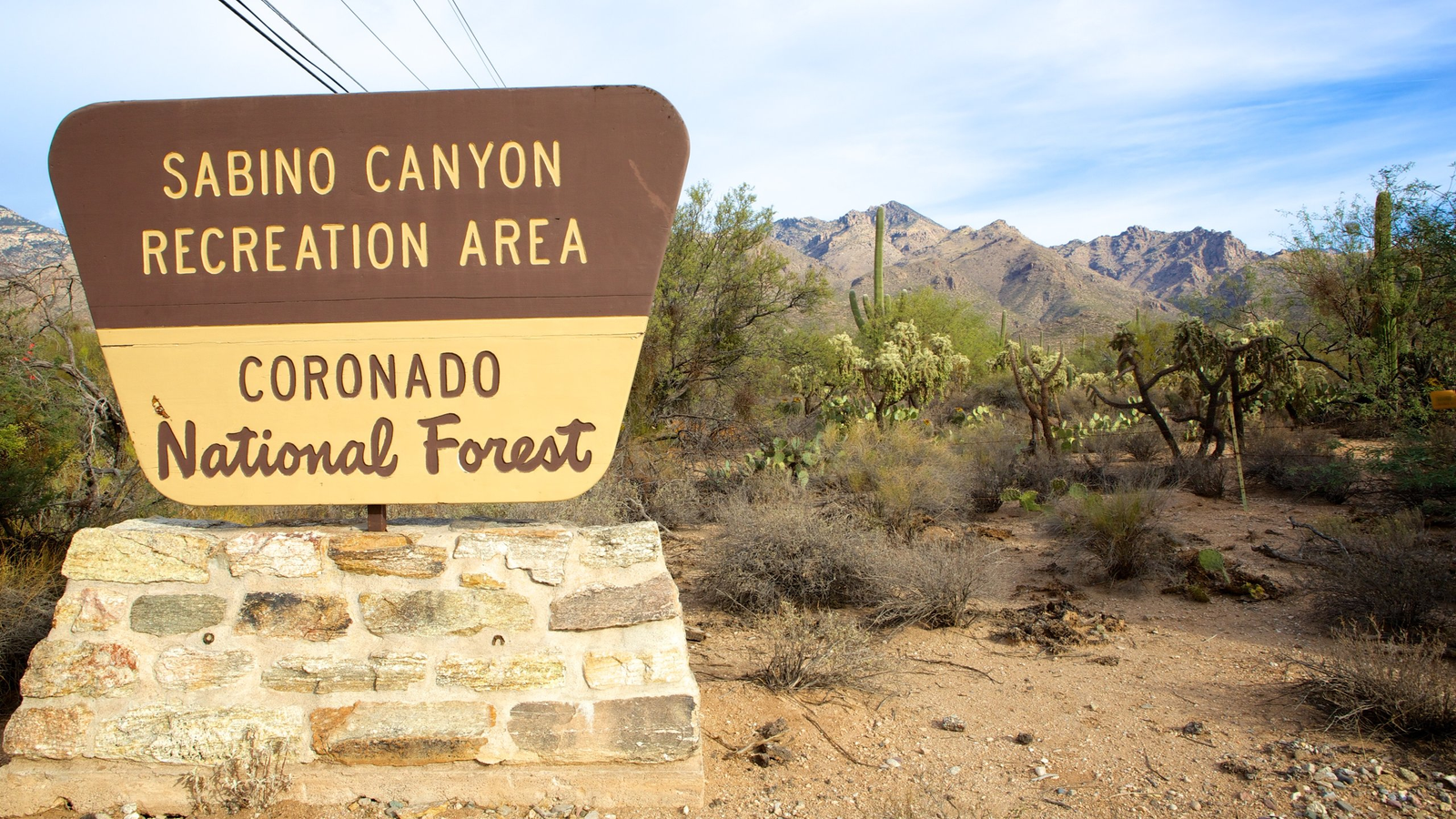
Name and Location: Sabino Canyon is a natural paradise located within the Coronado National Forest, just north of Tucson, Arizona.
History and Significance: This area has been a beloved spot for both locals and tourists for generations, offering a glimpse into the diverse ecosystems of the Sonoran Desert. Its history includes use by indigenous peoples, Spanish explorers, and American settlers.
What to Expect: Visitors can enjoy scenic tram rides, hiking trails of varying difficulty, and the beauty of the Sonoran Desert, including waterfalls and wildlife.
Visitor Information: The canyon is accessible year-round, with parking and visitor facilities available. Fees may apply for parking and tram rides.
Topping any list of Tucson’s most spectacular parks, Sabino Canyon provides nearly 60,000 acres of untamed natural beauty minutes from downtown. Cactus-dotted trails and stream-fed canyon oases set the scene for exceptional hiking and heart-pumping cycling adventures with the Santa Catalina Mountains painting an epic backdrop. Or rumble through the rugged landscape more leisurely aboard the Sabino Canyon Tram taking in informative narration during the 45-minute, round-trip tour.
However you opt to explore it, Sabino Canyon offers quintessential glimpses into the Sonoran Desert’s magnificent landscapes and diversity with nearly 10 miles of paths catering to all abilities—from gentle creekside nature walks perfect for wildlife spotting to rocky ridgelines granting panoramas stretching across Tucson and beyond.
See the Sights Along The Loop Trail at Saguaro National Park

Name and Location: The Loop Trail is a popular path in Saguaro National Park, located on the outskirts of Tucson, Arizona.
History and Significance: Saguaro National Park protects some of the most impressive stands of Saguaro cacti, a symbol of the American West and significant to the cultural heritage of the region.
What to Expect: The Loop Trail offers easy to moderate walks amidst towering saguaro cacti, with opportunities to see desert wildlife and stunning landscapes.
Visitor Information: Park entry fees apply. The park is open year-round, but visitors should be prepared for extreme heat during summer months.
No park defines epic Tucson scenery quite like Saguaro National Park and its iconic namesake inhabitants dotting the rugged natural landscape. The park is actually divided into two districts bookending Tucson city limits, with impressive saguaro forests protectively preserved across over 90,000 acres combined. At Saguaro’s western Rincon Mountain District, the paved, pet-friendly Cactus Forest Loop Drive offers effortless wildlife viewing thanks to pullouts perfectly positioned to admire and photograph the signature giant cacti.
The one-way scenic route spans just over 8 miles of quintessential Sonoran Desert habitat brimming with botanical biodiversity up close. Keep eyes peeled along the cacti-framed horizons for soaring red-tailed hawks or jackrabbits darting through spiny ocotillo forests across this beloved national park surrounding Tucson on all sides.
Wander Through Reid Park & Randolph Municipal Golf Course

Name and Location: Reid Park and Randolph Municipal Golf Course are situated in central Tucson, offering a large urban park and public golf course.
History and Significance: The park and golf course have provided recreational space for the community and visitors since the mid-20th century, contributing to Tucson’s quality of life.
What to Expect: Visitors can enjoy the zoo, rose garden, picnic areas, walking paths, and golf at one of the oldest courses in the city.
Visitor Information: Open daily, with specific hours for different facilities. Golf course fees apply, and park areas are generally free to the public.
Spanning over 100 acres just minutes from downtown, Reid Park offers wide green spaces with playgrounds, duck pond trails perfect for picnicking, and sports facilities catering to recreation seekers across generations. Baseball diamonds, volleyball courts, and tennis centers welcome pick-up games and league play, while the park’s iconic landmark “The Jon L. Tombs Rose Garden” impresses visitors when over 4,000 rose bushes erupt in vibrant spring blooms.
Adjacent Randolph Municipal Golf Course then unrolls manicured greens angling across palm tree-dotted fairways with the Tanque Verde Mountains painted scenically in the distance—a picturesque backdrop for working on your short game. Together, Reid Park and Randolph Golf Course give both residents and visitors scenic spots right in central Tucson to stay active under sunny skies.
Marvel at Natural Wonders at Catalina State Park

Name and Location: Catalina State Park is located at the base of the Santa Catalina Mountains, just north of Tucson.
History and Significance: This park is known for its diverse ecosystems, archaeological significance, and as a haven for outdoor enthusiasts.
What to Expect: Hiking trails, bird watching, camping sites, and the chance to see ancient Hohokam ruins are just some of the attractions.
Visitor Information: Entry fees are charged. The park is open year-round, offering facilities such as picnic areas and restrooms.
Situated against the Santa Catalina’s towering mountain ranges near Tucson, Catalina State Park safeguards over 5,500 acres of pristine Sonoran Desert wilderness speckled with saguaros. The park’s scenic hiking and biking trails cater to all abilities while serving up exceptional wildlife viewing opportunities. Keep eyes scanning trails for rock squirrels scampering close by or families of quail darting between cacti. Early mornings and evenings increase chances to spot mule deer grazing scrub brush, lonely coyotes patrolling perimeter washes, or maybe even a bobcat if luck smiles down.
Beyond quintessential desert inhabitants, the park also preserves remnants of Arizona’s mining history through crumbling landmarks like the historic Romero Ruin stone house. With campsites and cabins available for overnight escapes further immersing into Catalina’s natural splendor, the park offers peak adventures mere minutes from the city lights where saguaro forests thriving since prehistoric times beckon discovery.
Find Hidden Caves & Mine Ruins at Colossal Cave Mountain Park
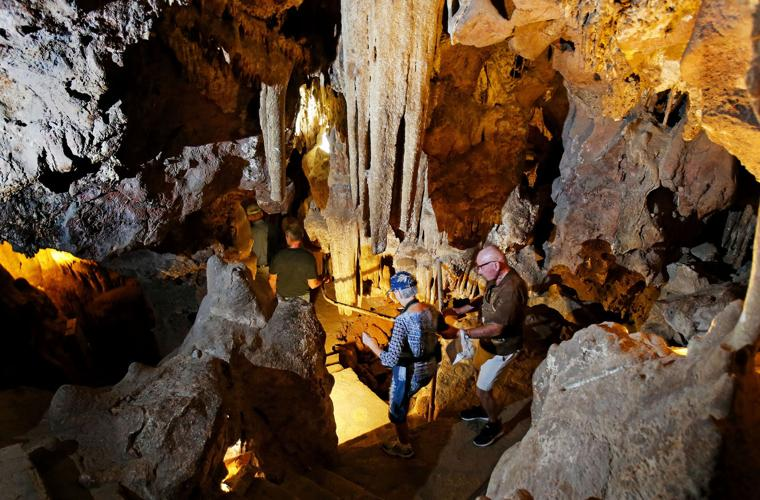
Name and Location: Colossal Cave Mountain Park is located southeast of Tucson, featuring a vast cave system and historic mine ruins.
History and Significance: The park’s caves have been explored for centuries, with evidence of use by prehistoric peoples and later by miners in the 19th century.
What to Expect: Guided tours of the caves, hiking trails, and the opportunity to learn about the region’s geology and history.
Visitor Information: Tours are available for a fee. The park also offers picnic areas and camping sites.
Just 20 minutes from downtown, Colossal Cave Mountain Park transports adventurers back to the 1880s courtesy of its mammoth limestone caverns left behind after nearly 2,000 years of erosion. Deep underground, the elaborate cave system winds past stalagmites, flow stones, and even heartbeat-quickening tight squeezes between rocky tunnels. Choose from three specialized tours spotlighting everything from basic geology to lurid tales from the cave’s notorious past as a reputed hideout sheltering train robbers and outlaws galloping through after stagecoach heists.
Above ground, riders can rent horses and see vestiges of bygone mines that once made the area an important source for lead, silver, and zinc ores essential for bullet production. With campgrounds available for overnight stays capped by brilliant starry skies, Colossal Cave Mountain Park offers subterranean thrills alongside old west history perfect for spelunking families.
Relax at Kennedy Park in Midtown
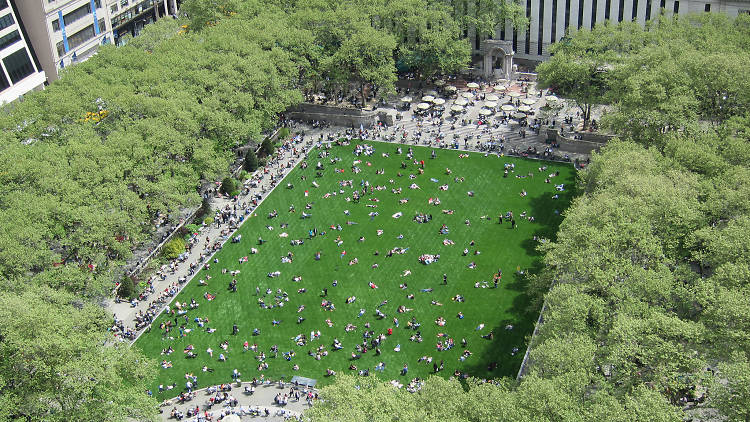
Name and Location: Kennedy Park is a spacious public park located in midtown Tucson, offering a variety of recreational facilities.
History and Significance: Serving the community for many years, Kennedy Park provides a green oasis in the urban landscape, promoting outdoor activities and gatherings.
What to Expect: The park features a lake, picnic areas, sports facilities, and ample space for walking and relaxation.
Visitor Information: Open daily, free to the public. Facilities such as ramadas may be available for reservation.
Set just west of downtown in the trendy Midtown District, Kennedy Park provides a charming neighborhood escape thanks to duck ponds, rose gardens, and wide grass lawns shaded by towering trees. At the park’s heart, a sheet fountain offers relief from Tucson’s blazing desert heat while kids can expend energy at the playground housed under a whimsical ramadas structure ornately decorated with Southwestern motifs.
On weekends, check out the popular farmers market showcasing fresh produce, artisan crafts, and delicious Sonoran food truck options. Programmed events like yoga sessions or live music concerts further encourage grabbing blanket space on Kennedy Park’s sprawling lawns perfect for unwinding during long Tucson summers spent soaking up idyllic parkside settings in the shade.
See Panthers & Bears at Tucson Mountain Park
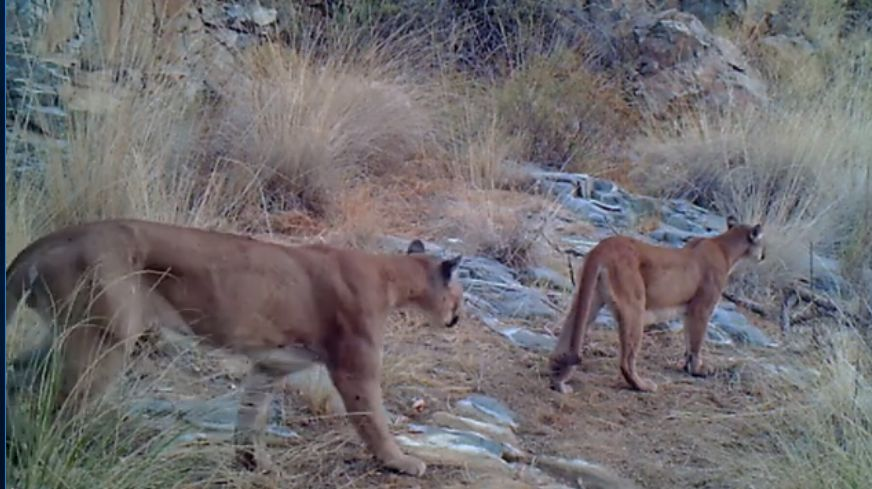
Name and Location: Tucson Mountain Park, located west of Tucson, encompasses rugged terrain and diverse wildlife habitats.
History and Significance: Established to preserve natural resources, the park is a significant conservation area and provides educational opportunities about desert ecosystems.
What to Expect: Hiking, mountain biking trails, and the chance to observe native wildlife, including javelinas, mountain lions, and black bears, in their natural environment.
Visitor Information: No entrance fees. The park is open year-round, with specific guidelines to protect both visitors and wildlife.
Spanning over 20,000 acres of saguaro forests cradling the Tucson Mountains, this expansive natural park space balances fantastic hiking opportunities with chances for close-up wildlife encounters at the Arizona Sonora Desert Museum–one of Tucson’s most popular attractions. Outside the zoo, 240 miles of designated trails give hikers options ranging from gentle wildflower nature walks to hearty mountain treks scaling over 4,500 feet boasting big rewards in scenery.
Mountain bikers can also test skills across 50+ miles of dedicated single-track routes stacked with technical challenges and exhilarating downhills. Yet whatever your preferred way to explore Tucson Mountain Park’s photogenic vistas, its unspoiled desert ecosystems make enjoying a saguaro sunset or perhaps spotting a coyote exceptionally memorable.
Find Family Fun at Thomas Jay Regional Park
Name and Location: Thomas Jay Regional Park is a family-friendly destination located in the outskirts of Tucson, offering a wide range of outdoor activities.
History and Significance: The park is designed to provide recreational opportunities for all ages, enhancing the community’s access to green spaces and sports facilities.
What to Expect: Amenities include playgrounds, sports courts, walking paths, and picnic areas, making it an ideal location for family outings and sports events.
Visitor Information: Open daily, with free admission. Some facilities may require reservations or rental fees.
For aquatic play perfect for staying cool as Tucson temperatures climb, Thomas Jay Regional Park satisfies with the largest water playground in southern Arizona. Kids can splash down curly slides, blast water cannons at unsuspecting friends, or get delightfully drenched under giant tipping buckets spread between three lively splash pads. Away from the wet fun, families will also find shady ramadas, barbeque grills, and a treehouse-themed playground.
Throughout the year, free special events range from outdoor movies to fall pumpkin patches and holiday light displays spreading seasonal cheer park-wide. As TJ Regional Park continues expanding recreation options across over 200 acres just off the I-10 southeast of Tucson, its family-friendly amenities offer ideal oases for mixing scrolling desert panoramas with smiles under the summer sun.
See Stunning Succulents at Tucson Botanical Gardens
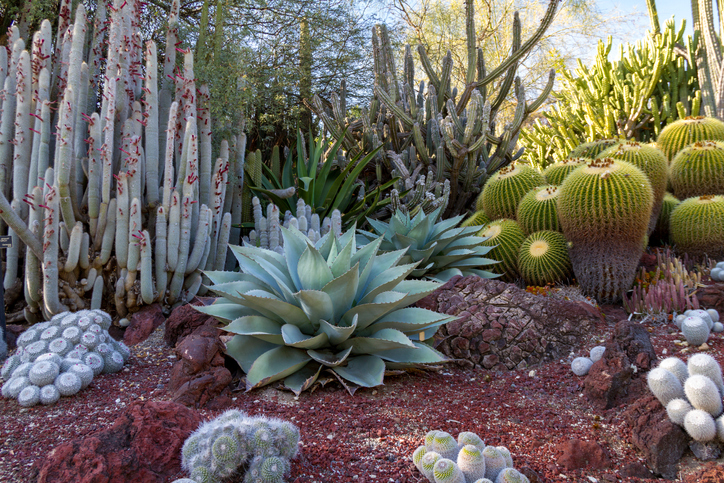
Name and Location: Tucson Botanical Gardens is located in central Tucson, showcasing an extensive collection of desert plants and succulents.
History and Significance: The gardens serve as a center for education, conservation, and research, highlighting the beauty and diversity of desert flora.
What to Expect: Themed gardens, including a butterfly greenhouse and a Zen garden, offer visitors a tranquil and educational experience among the plants.
Visitor Information: An admission fee is charged. The gardens are open year-round, with special events and programs offered regularly.
Unfurling across 5 lush acres in midtown Tucson, the Tucson Botanical Gardens make for an idyllic urban escape into creative landscapes bursting with desert flora. Thematic gardens give visitors up-close experiences with global cacti collections, Butterfly Magic habitats, interactive children’s gardening exhibits, and tranquil Japanese spaces dotting koi ponds with Asian-inspired sculptures. The Garden of Ancients holds exotic plants echoing prehistoric eras, while the Barrio Garden demonstrates indigenous water harvesting supporting agriculture for centuries.
No matter where curving gravel paths lead next, a bounty of botanical biodiversity thrives all around to soak up free self-guided tours available any day of the week. As you wander past fragrant herbs, bursts of wildflowers, and even beneficial plants used in Mexican folk healing, the Tucson Botanical Gardens reveal beautiful snapshots of the flora comprising the Sonoran Desert’s vibrant ecosystems.
Have a Picnic at Gene C. Reid Regional Park
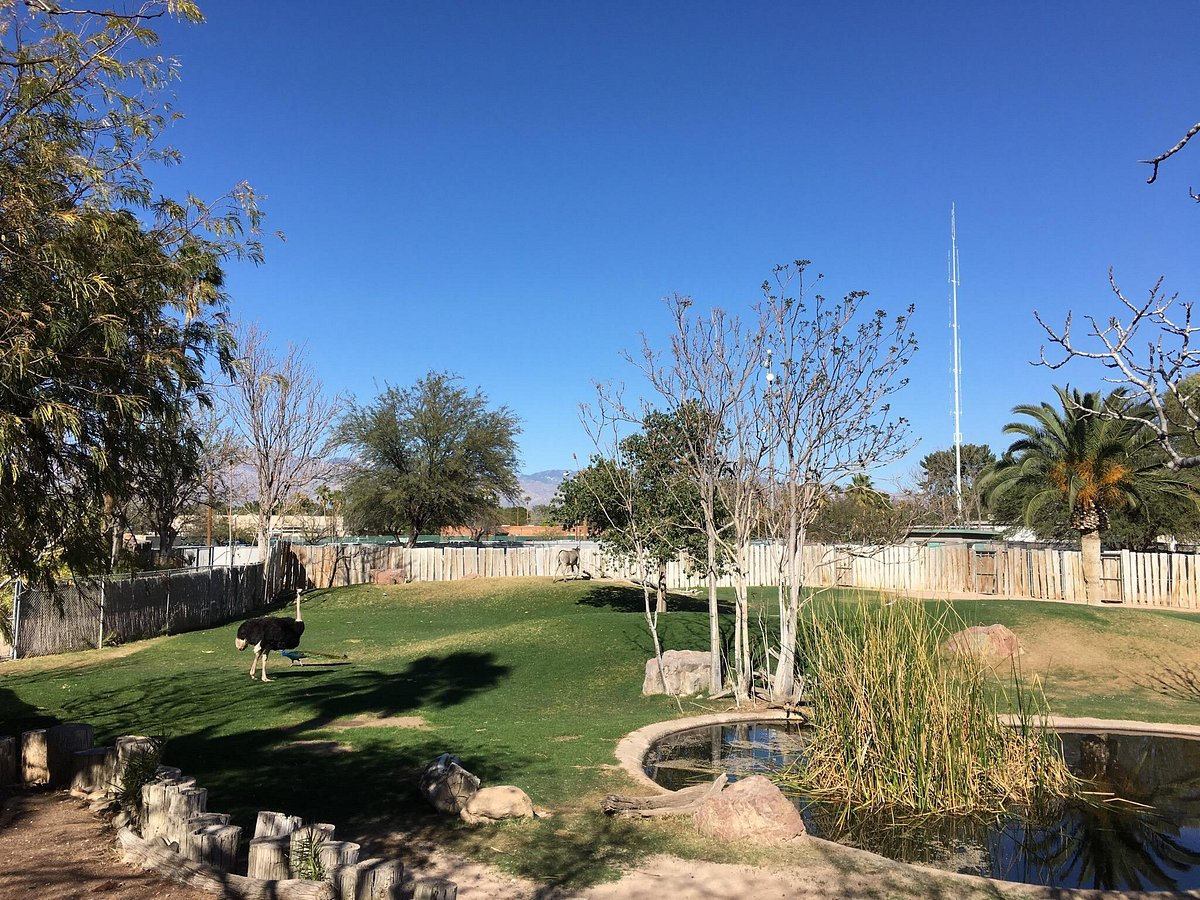
Name and Location: Gene C. Reid Regional Park, centrally located in Tucson, is a large urban park offering a variety of recreational amenities.
History and Significance: The park has been a central part of Tucson’s park system for years, providing a green space for relaxation, sports, and community events.
What to Expect: The park features expansive grassy areas, picnic spots, playgrounds, and access to the Reid Park Zoo.
Visitor Information: Open to the public daily, with no admission fee for general park areas. Specific attractions within the park may have their own hours and fees.
Flanking the Cañada del Oro River basin with epic mountain views serving as the backdrop, Gene C. Reid Regional Park gives families ample room to stretch out across verdant lawns shaded by towering cottonwoods and willow trees. Kids can roam imaginatively through the park’s whimsical Alice in Wonderland and Wizard of Oz themed playgrounds before cool off when Tucson temperatures climb thanks to water splash pads.
With covered ramadas and barbeque grills scattered throughout, Gene Reid Park encourages leisurely picnics accompanied by picturesque views of the golden-hued Santa Catalina peaks rising dramatically along the horizon. Leashed dogs can also join the fun to socialize across designated off-leash areas giving pets room to roam alongside their owners across over 100 acres of scenic parkside open spaces prime for unwinding.
Test Mountain Biking Skills at The Shootout Loop at Fantasy Island at Saguaro National Park
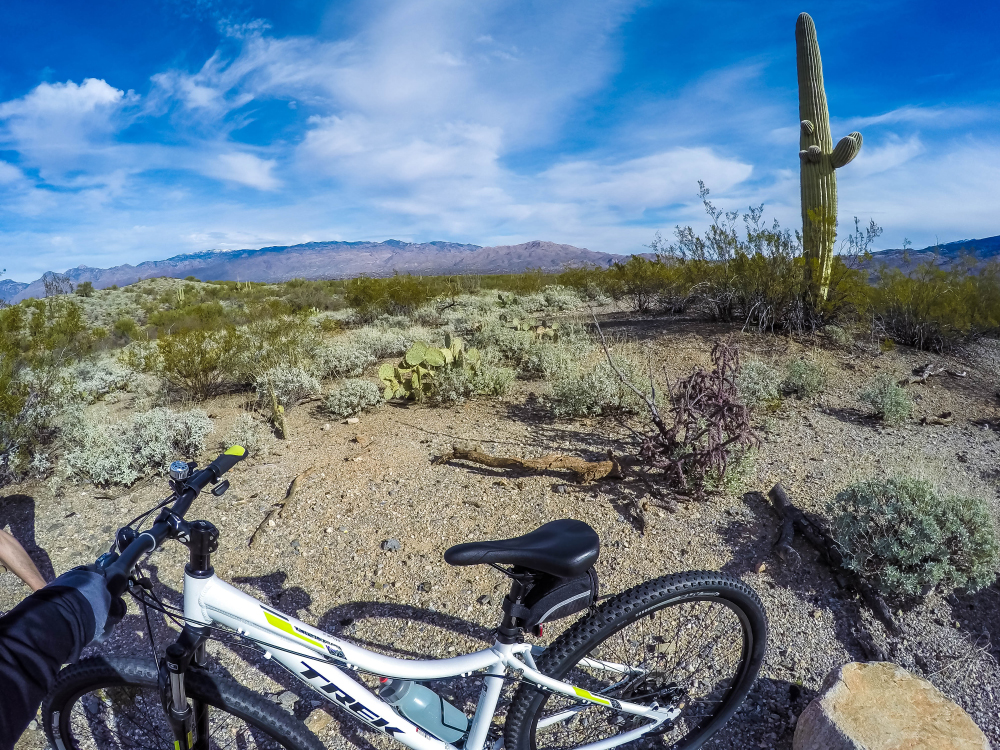
Name and Location: The Shootout Loop is a mountain biking trail located in the Fantasy Island area of Saguaro National Park, on the east side of Tucson.
History and Significance: This trail is part of a network designed for mountain biking enthusiasts, offering a challenging and enjoyable experience amidst the park’s natural beauty.
What to Expect: Bikers can expect a variety of terrain, including technical sections and fast descents, suitable for intermediate to advanced riders.
Visitor Information: The trail is open year-round, with no fees specifically for biking. Riders should be prepared with water, helmets, and appropriate gear.
While better known for iconic giant cacti dotting stark desert landscapes, cyclists flock to Saguaro National Park’s eastern district for its acclaimed mountain biking proving as scenic as it is challenging. Known as The Shootout Loop, this 12-mile single-track route accessible from the Signal Hill picnic area gains over 1,000 feet in elevation as it winds through a rocky gauntlet testing skills across quick turns, abrupt drops, and plenty of technical ups-and-downs sure to get hearts pumping fast.
Yet demanding trails pay off handsomely thanks to constantly unfolding panoramas across Saguaro’s sundrenched cacti forests unfurling as far as the eye can see. For exciting backcountry cycling adventures perfectly paired with unforgettable scenery, Saguaro National Park delivers rugged routes ready to conquer amid quintessential desert playgrounds.
Enjoy Urban GREEN Spaces at Jacome Plaza
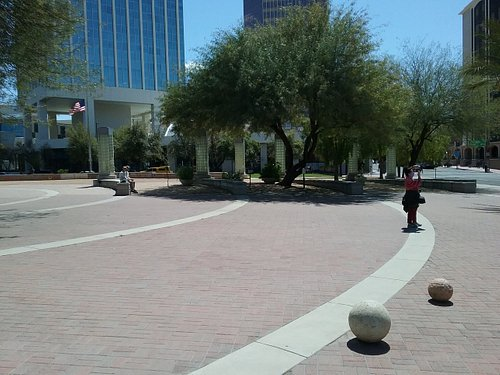
Name and Location: Jacome Plaza is an urban green space located in downtown Tucson, offering a peaceful retreat amidst the city’s hustle and bustle.
History and Significance: The plaza is a central part of downtown Tucson, providing a space for community events, art installations, and leisure activities.
What to Expect: Visitors can enjoy outdoor seating, public art, and occasional events and markets hosted in the plaza.
Visitor Information: Jacome Plaza is accessible to the public daily, with no admission fee. It’s a great spot for a lunch break or a casual meeting.
Unfurling across a city block in downtown Tucson, Jacome Plaza provides a inviting public space to enjoy acclaimed concerts, art fairs showcasing local talent, or simply relax amid lush lawns and water features right in the urban core. Towering palm trees dot the plaza casting shade over benches and geometrically designed concrete planters erupting in colorful floral displays. On certain evenings, classic movies projected onto the surrounding building facades encourage grabbing a patch of grass to enjoy cinematic classics under Tucson’s glittering night skies.
Throughout it all, dramatic steel sculptures inject artistic intrigue, from children gleefully playing inside a giant spiderweb to a stack of VW Beetles precariously climb toward the sky marking the plaza’s edge. For an easy escape into eye-catching public art and ample urban green spaces perfect for people watching against modern downtown’s pulsing backdrop, Jacome Plaza offers inviting open spaces sure to delight.
Final Thoughts
Exploring Tucson through scenic trails, family-friendly aquatic centers, and open green spaces perfect for whiling away long sunny days rewards visitors with plenty of ways to connect with the region’s magnificent desert personality and outdoor identity unique to southern Arizona’s distinctive landscapes. Above all, Tucson’s beloved parks system gives everyone abundant opportunities to make the most of the city’s near-perfect climate through recreation made accessible across spaces as dynamic and diverse at the community itself.
From hiking through national park cacti forests to cycling challenging mountain loops serving up staggering scenery, memorable moments overflow from Old Pueblo days filled exploring the Sonoran Desert’s vibrant ecosystems at every turn. Whether looking to unlock panoramic views from lofty ridgelines or simply find shady respites to unfold a picnic blanket and watch clouds drift by, Tucson’s scenic parks offer natural spaces certain to inspire.




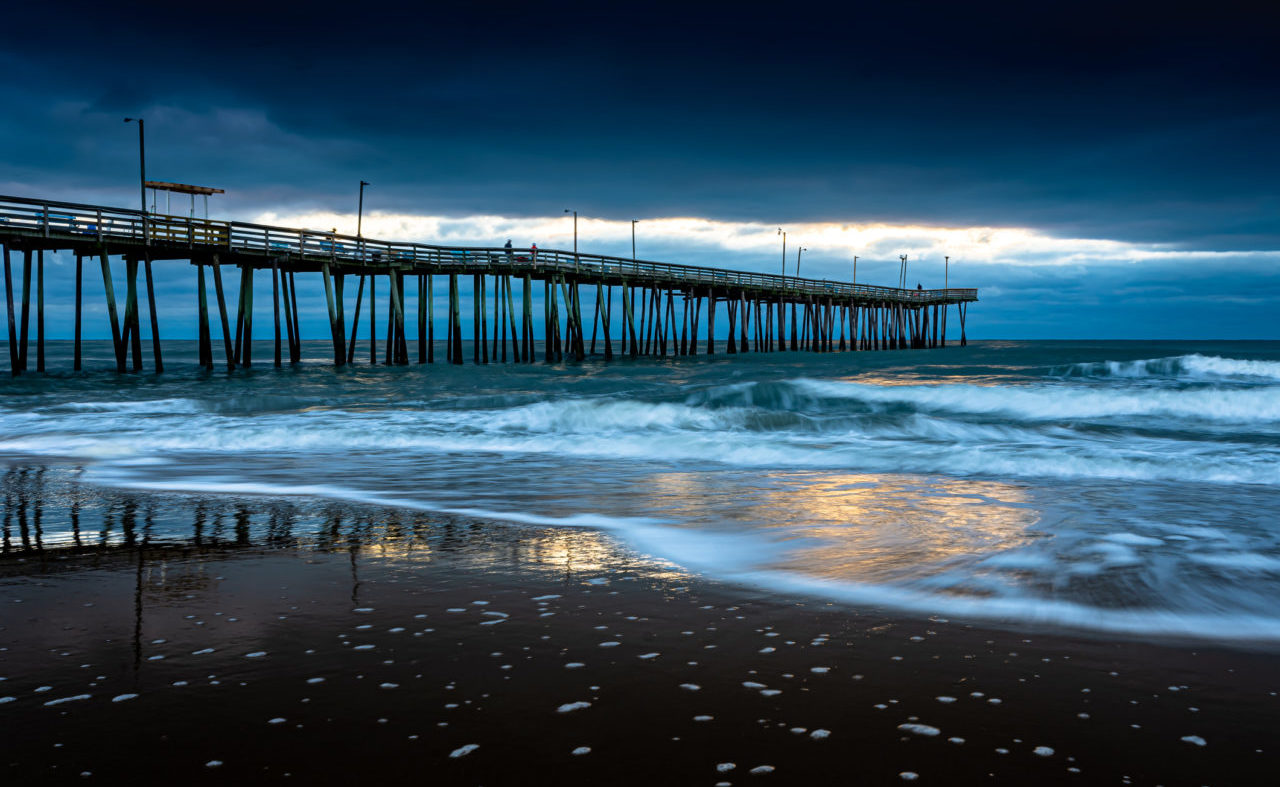
Join the Conversation